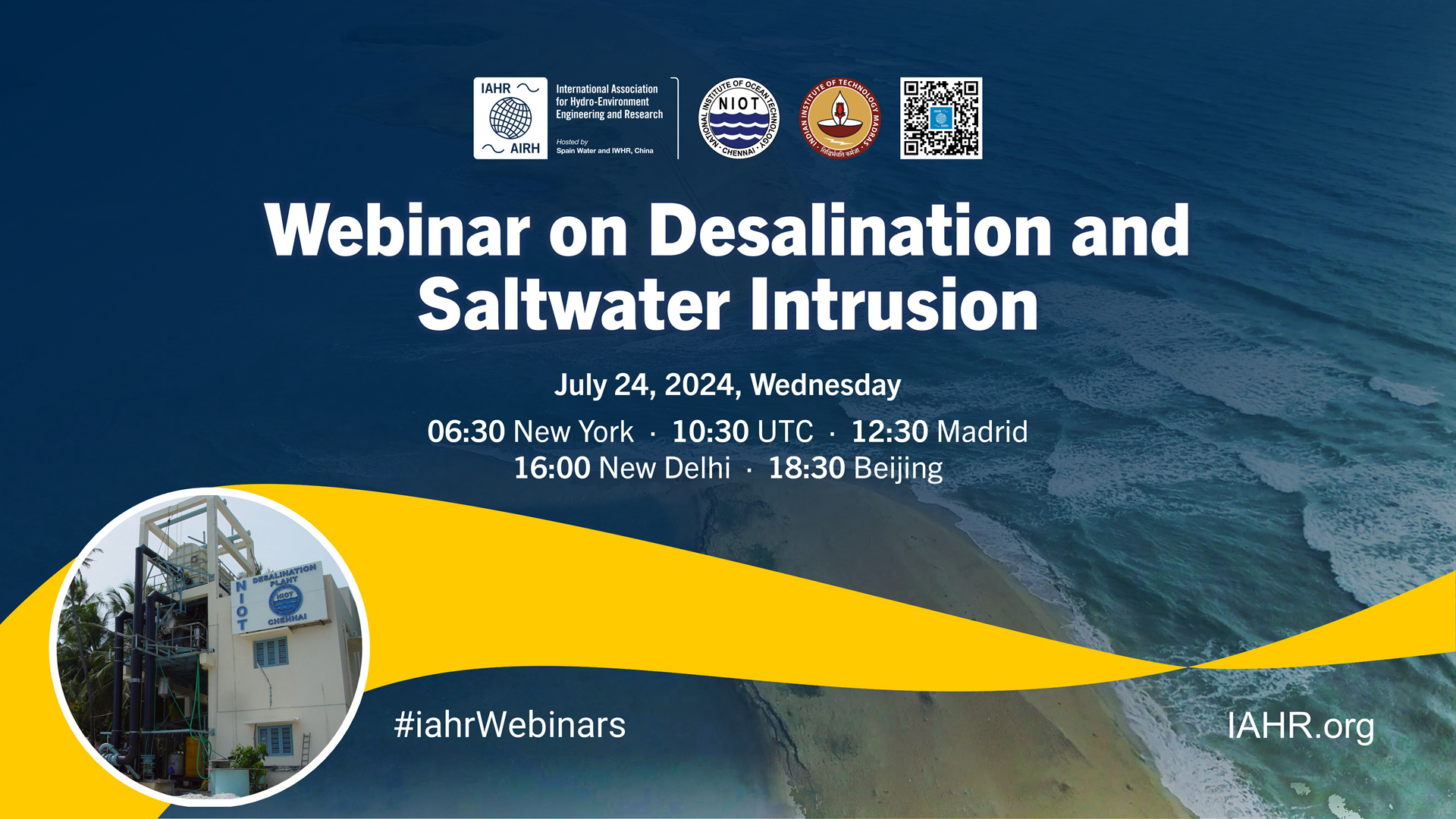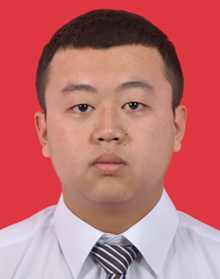Summary of IAHR Webinar on Desalination and Saltwater Intrusion

On July 24, 2024, IAHR, the National Institute of Ocean Technology, India (NIOT), the Indian Institute of Technology Madras (IITM), and Anna University co-hosted the Webinar on Desalination and Saltwater Intrusion. This event gathered leading experts to explore advanced methods and strategies for effective desalination and managing saltwater intrusion. The webinar featured presentations from Dr. Zhongyuan Lin, Prof. Rajendra Prasad, Eng. Manuela Escarameia, Eng. Mario Valente, and Prof. Pradip K. Tewari, with Prof. Purnima Jalihal serving as chair.
Dr. Zhongyuan Lin, Senior Engineer, River and Coast Research Institute, Pearl River Water Resources Research Institute (PRWRRI), China, presented his research on saltwater intrusion in the Pearl River estuary. He highlighted the significant impact of saltwater intrusion on the Guangdong-Hong Kong-Macau Greater Bay Area, affecting over 15 million people. Dr. Lin discussed the strategies implemented since 2005, such as large hydropower projects during the dry season to ensure water supply security. He detailed the characteristics of saltwater intrusion in the estuary, influenced by factors like river discharge, tides, and wind. Dr. Lin also explained the measures taken to mitigate saltwater intrusion, including water dispatching during the dry season, building a drought prevention platform, and establishing three lines of defense for water supply security.
Prof. Rajendra Prasad, Professor Emeritus in Andhra University, India, discussed the challenges and opportunities related to coastal water resources in India. He emphasized the significance of groundwater in coastal regions and its vulnerability to seawater intrusion. Prof. Prasad provided an overview of India's water resources, highlighting the declining per capita availability and the over-exploitation of groundwater. He discussed the impact of climate change on rainfall patterns, leading to reduced groundwater recharge and increased extreme weather events. Prof. Prasad also covered the use of hydrological models and artificial intelligence techniques for identifying and managing seawater intrusion, and the need for improved water governance and policy measures.
Eng. Manuela Escarameia, Technical Director HR Wallingford, UK, and Eng. Mario Valente, Consultant, HR Wallingford, UAE, presented on the implementation and environmental concerns of desalination plants, with a focus on the marine structures. They discussed the shift from thermal to reverse osmosis technologies, highlighting the significant reduction in power consumption and environmental impacts. They emphasized the importance of managing brine discharge to minimize marine pollution and the use of multiport diffusers for effective mixing. The presentation included a case study from Saudi Arabia, demonstrating the successful implementation of large-scale reverse osmosis desalination plants and the importance of robust design of the intake and outfall systems. They also touched on the specific challenges and solutions for desalination in the Indian context, considering the country's diverse coastal environments and climatic conditions.
Prof. Pradip K. Tewari, Jal Jeevan Mission (JJM) Professor Chair and Head Department of Chemical Engineering in IIT Jodhpur, India, discussed desalination in the Indian context, focusing on both thermal and membrane technologies. He highlighted the various desalination plants in India, such as those in Chennai and Jamnagar, and the challenges associated with high energy consumption and cost. Prof. Tewari emphasized the need for technological innovations to reduce costs and improve efficiency. He discussed ongoing research in enhancing heat transfer coefficients in thermal processes and developing advanced membranes for reverse osmosis. Prof. Tewari also mentioned the potential of low-temperature thermal desalination and the use of nano-composite membranes for improving desalination efficiency.
Pradip K. Tewari
Rajendra Prasad
Mario Valente
Zhongyuan Lin
During the Q&A sessions, various questions were answered by the speakers on the significant factors influencing saltwater intrusion, the direction of saltwater intrusion, the use of artificial neural networks for modeling, the impact of climate change on water supply, connectivity of aquifers, the application of AI in hydrological modeling, the use of hydrogen as fuel for desalination plants, the volume of treated seawater and brine, the challenges of biofouling in intake systems, cost reduction in desalination, the development of new membrane technologies, and the potential of desalination in inland areas.
The webinar concluded with a reaffirmation of the crucial role that desalination and saltwater intrusion management play in addressing global water scarcity issues. The collaborative efforts and knowledge shared during the event underscored the importance of ongoing research and innovation in this field. Organizers thanked all participants and speakers for their contributions, highlighting the success of the webinar in fostering a deeper understanding of the challenges and solutions related to desalination and saltwater intrusion. The discussions emphasized the need for integrated approaches that combine technological advancements with environmental and socio-economic considerations to develop sustainable water management strategies.





